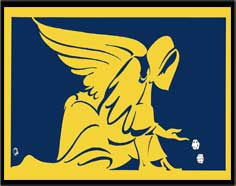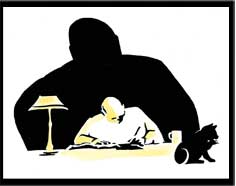After almost a decade in the headlines, Abraham Saffron’s name disappeared from the newspapers until his 1973 appearance before the Moffitt Royal Commission into Organized Crime. Commission investigators pursued two lines of inquiry into Saffron’s alleged activities, one obvious and the other rather curious — his associations with Sydney’s controversial poker machine magnate, Jack Rooklyn, and the identity of the mysterious ‘Mr Sin’. During the 1960s the Sydney tabloid press had run frequent articles chronicling the saga of the evil and ever-anonymous ‘Mr Sin’, the city’s czar of commercial sex. Assuming the proportions of a latter day bugbear, Mr Sin’s saga filled the hyperbolic columns of the Sunday Mirror for several years: sleazy Mr Sin ‘grabs the biggest slice of $50 M vice rake-off’; ‘ruler of a Sydney vice empire’, Mr Sin is driven out of Perth by local Italian gangsters; and ‘he’s at it again’ Mr Sin branches out from sex rackets into shares in an illegal casino. Evidently equating Saffron with Mr Sin, Commission investigators devoted considerable time to questioning him about this tabloid persona.
Demonstrating the same reticence that had characterized his testimony before the Liquor Royal Commission twenty-two years earlier, Saffron admitted that his companies controlled two clubs, the Pink Parrot and Pink Pussycat, but claimed that he was unaware of their regular striptease acts — a remarkable claim since the latter club was perhaps the most famous striptease venue in all Australia. Having established his involvement in the striptease trade, the Commission moved on to ask the hard question. In an earlier radio interview with Sydney radio personality John Laws, Leonard McPherson had denied that the ‘Mr Sin’ label was an appropriate title for Saffron, and said that Saffron was ‘the loveliest person you could meet’. Asked about McPherson’s statement before the Royal Commission, Saffron denied that he was the person referred to:
Commission: You are commonly referred to, Mr Saffron, in the press as ‘Mr Sin’, are you not?
Saffron: I have seen the references you have and you have informed me for the first time that I might be commonly referred to as such.. .
Commission:– Have you met Mr Leonard McPherson six or seven times?
Saffron: I have never met Mr Leonard McPherson.
Commission: Did you hear a radio interview he had with Mr John Laws?
Saffron: No, I did not…
Commission: Will you listen to what Mr McPherson is supposed to have said on that programme: He was asked: ‘Who is Mr Sin?’ And he said: Well, I have met the man they claim to be ‘Mr Sin’ on about six or seven occasions in my life. You couldn’t get a softer spoken man than him. He is the loveliest person you could meet, and in regards to saying any man is ‘Mr Sin’, I can only say that any man who is behind drugs would be classed as ‘Mr Sin’ and there are many ‘Mr Sins’, and so you can’t just nominate a man and say this is ‘Mr Sin’. . .
Commission: Did you not understand that to be a reference to you?
Saffron: I certainly do not.
The Commission investigator’s impression of Saffron was apparently shared by elements of the Australian police. In 1972 Commonwealth Police investigating the activities of poker machine entrepreneur Jack Rooklyn in Djakarta reported that ‘now Saffron is purchasing or leasing premises to be used as brothels in conjunction with Rooklyn’s casinos’. The source of this information, Detective Sergeant Brian J. Ballard of the Consorting Squad, told the Royal Commission why he had suspected Saffron’s investments in Djakarta were somehow involved with prostitution:
Commission: Did you have a conversation with Commonwealth Police about Rooklyn [owner of Bally poker machines] and his distribution points in Djakarta? . . .
Ballard: I told them that I had information that Rooklyn had sold his distributing points in Djakarta but retained his casinos. I also told them that Saffron had purchased premises probably to be used in conjunction with Rooklyn. . . I do not recall saying that they would be used as brothels, although it would have been that it passed through my mind at the time. . .
Commission: Were you aware that Saffron was engaged in activities which were beyond the law?
Ballard: No, Sir.
Commission: When you told us earlier that Saffron was going to use these premises in Djakarta as brothels, what possible justification would you have had for such a thought?
Ballard: Well, it is one of those things when a man gets a reputation that sticks to him — going back a number of years.
Over the years Saffron has become extremely sensitive about the ‘Mr Sin’ label and frequently sought public forums to deny that he was the person involved. When the South Australian Attorney General named him in State parliament in early 1978 as a ‘principal character in organized crime in Australia’, he gave press interviews to insist that he was not ‘Mr Sin’. Pursuing any major newspaper that reported as fact his identity with ‘Mr Sin’, Saffron filed a number of libel cases, most particularly against the Melbourne Age for a June 1975 article headlined ‘ “Mr Sin” Promoted As Film Financier’. Claiming erroneously that the N.S.W. Royal Commission on Organized Crime had positively identified Saffron as ‘Mr Sin’, the Age reported that Saffron was considering a number of film investments with the Australian Film Development Corporation and had at one point committed himself to providing $125,000 for the film Adventures of Barry McKenzie. As a part of the settlement reached with the Age publishers, Saffron was allowed to deny under oath that he was ‘Mr Sin’ when the case was heard before the Supreme Court in March 1978.
Defence Counsel: Between 1970 and 1974 did you see in various Sydney newspapers references to a person described as ‘Mr Sin’?
Saffron: I did.
Defence Counsel: Did those newspapers allege this person was the main organizer of prostitution and vice rackets in Sydney?
Saffron: They implied that.
Defence Counse: Are you ‘Mr Sin’?
Saffron: I am not.
Given the anonymous and hyperbolic reportage about ‘Mr Sin’s’ supposed exploits, it would be difficult to affix the label definitely to anyone in a court of law. ‘Mr Sin’ remains then a uniquely Australian bit of media mythology.
POSTWAR SP BETTING
Although the technical complexities of the off-course betting had long protected the SP fraternity from anything but simple stand-over demands by the city’s violent professional criminals, the consolidation of control within the milieu by several syndicates after the gang wars of 1967-8 eventually produced a major change in the relationship between organized crime and SP bookmaking. The more disciplined and sophisticated syndicates that emerged in the late 1960s soon gained both the capital and competence to establish their own illegal betting operations. By the late 1970s a leading organized crime figure controlled Sydney’s largest SP telephone network and the old independent SP men were in retreat.
THE McPHERSON GROUP
The Moffitt Royal Commission’s inquiry into the 33 Club’s operations focused enormous publicity on the long criminal career of Leonard McPherson and he emerged from the hearings a nationwide celebrity. McPherson and his mates, Stanley Smith and George Freeman, did not achieve their reputations as leading milieu personalities until the 1970s. Throughout the decade their names, sometimes individually or sometimes jointly, figured prominently in almost every N.S.W. government inquiry into organized crime. Close friends for over twenty years, the mateship of McPherson, Smith and Freeman has been one of the most visible aspects of the postwar Sydney milieu.
Born in New South Wales on 10 May 1921 and raised in Sydney’s waterside working-class suburb Balmain, McPherson was found guilty of stealing for the first time at the age of twelve and committed to an institution on theft charges the next year. Although arrested some seventy-three times, McPherson has been convicted on serious charges only five times since World War II. Convicted for the last time on a major offence in August 1955, McPherson was sentenced to twelve months’ imprisonment for having an unlicensed pistol in his possession.
In their appearances before the Moffitt Royal Commission into Organized Crime in 1974, the Commonwealth Police submitted documents which described Leonard McPherson as ‘a vicious, powerful criminal who is so well entrenched in organized crime activity in New South Wales that he is often referred to in the media and by his associates as “Mr Big” ‘.
Among McPherson’s circle of friends and associates in the 1960s were two criminals who achieved considerable public note a decade later — Stanley John Smith and David George Freeman. Described before the N.S.W. Parliament in 1978 as ‘ “Stan the Man” . . . either No. 1 or 2 in the underworld, with George Freeman’, Smith was McPherson’s constant companion for the better part of two decades. Born in Balmain on 3 January 1936, Smith grew up in the waterfront suburb where many of his relatives were employed in stevedoring and ship repair. Describing his relationship with the elder McPherson before the N.S.W. Drugs Royal Commission in 1978, Smith explained: ‘I have been a friend of his for twenty-five years. . . In our younger days we used to drink in the same hotels. I have never had any fall out with him except the usual things that you have known each other for twenty-five years and you will have some fall out — dozens of them, I suppose, disagreements about point of view, but no fall out at all. I am still a friend of the man.’ Already known to N.S.W. police in 1954, Smith made his first major public appearance with McPherson when the two took a Pacific cruise together in 1961 Evidently prospering from his associations, Smith and his wife purchased a substantial home at 7 Stanbury Street, Gladesville in 1965 — only a mile from McPherson’s. In 1968 and 1974 N.S.W. police described Smith in a court case on consorting charges as ‘a standover merchant and international shop thief’.
The other main member of the ‘McPherson Group’, as N.S.W. police called it, was George David Freeman, a man who allegedly became one of Sydney’s leading SPs in the late 1970s. Apparently the closest of mates, Freeman and Smith travelled together to the United States in 1968 where they were the guests of Joseph Dan Testa, an alleged Mafia financier, at his Chicago home for six weeks. Together with another Freeman associate, Arthur ‘Duke’ Delaney, the two became involved in ‘an organized campaign of shop lifting overseas’ in the late 1960s. Smith and Freeman were arrested together in Perth in May 1968 on charges of conspiring to steal and receive, and received substantial sentences in West Australian prisons.
Although Smith and the ageing McPherson drifted apart somewhat after Smith moved from Gladesville to Whale Beach in mid-1973, Smith and Freeman have remained constant companions. The real estate company Freeman owned jointly with Joseph Testa, Grants Construction Pty Ltd, claimed to have employed Smith in the mid-1970s and gave him a housing loan reference; Freeman posted a $20,000 cash bond on Smith’s behalf when he was charged before a Victoria court with possessing Indian Hemp in 1976; and in 1976-7 Mr and Mrs Freeman and Mr and Mrs Smith were supposedly involved in some complex and very profitable horse race betting transactions, one of which they claimed had won them $93,000. Called before the N.S.W. Drugs Royal Commission to explain his sources of income, Smith relied on a declaration by George Freeman and others about his alleged racing wins to justify his lavish lifestyle — an explanation the Commission’s counsel called ‘a distressing absurdity’. In the changing world of the postwar Sydney milieu the mateship of McPherson, Smith and Freeman has survived as one constant point of reference.







You must be logged in to post a comment.